

Giuseppe Gammino
ci sono cose da non fare mai
Duration: 15'
Instrumentation details:
clarinet in Bb
flugelhorn in Bb (+tpt(C))
baritone saxophone in Eb (+alto sax(Eb))
piano
viola
ci sono cose da non fare mai
Translation, reprints and more
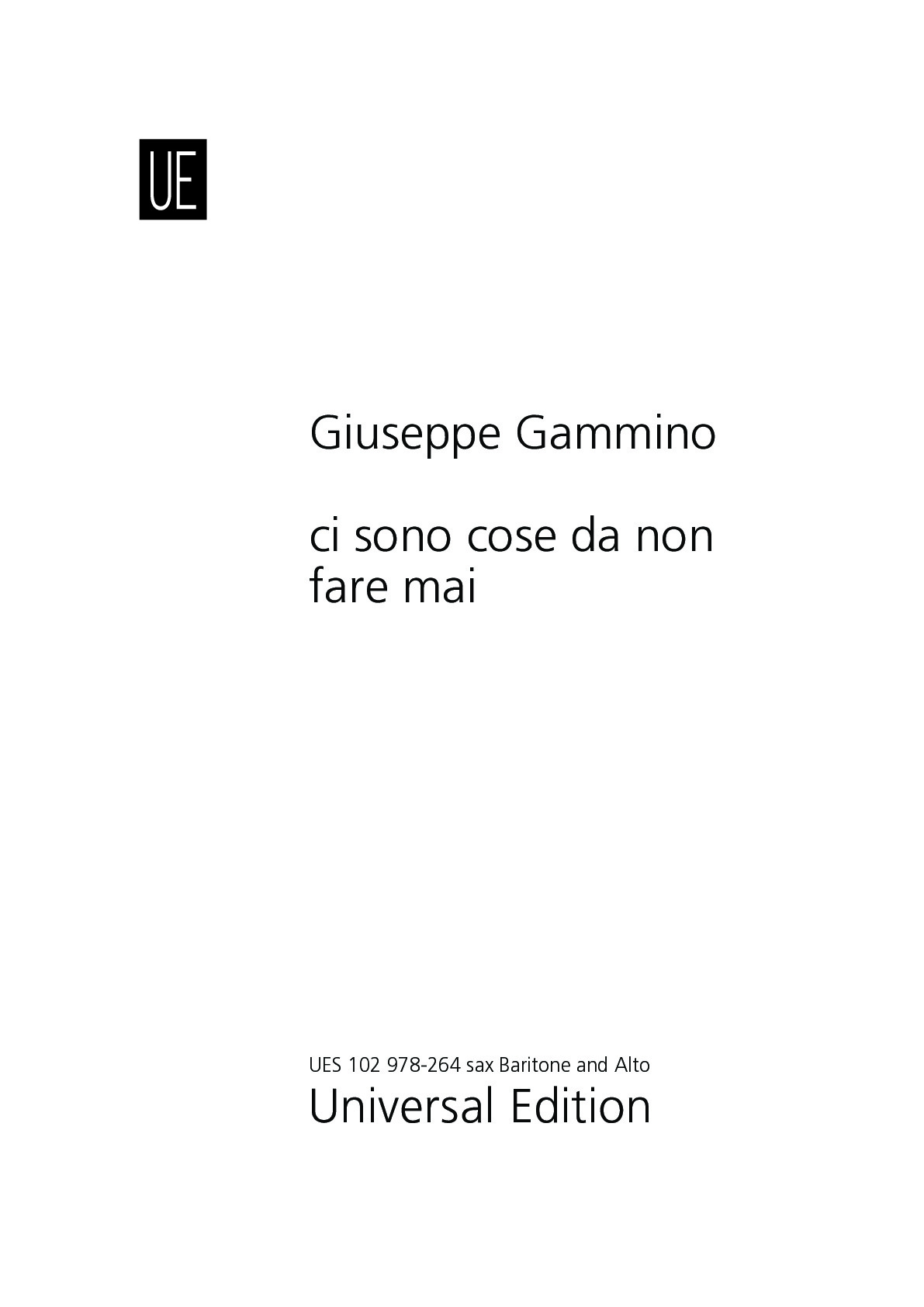
Giuseppe Gammino
Baritonsaxophon in Es (ci sono cose da non fare mai)Type: Stimme
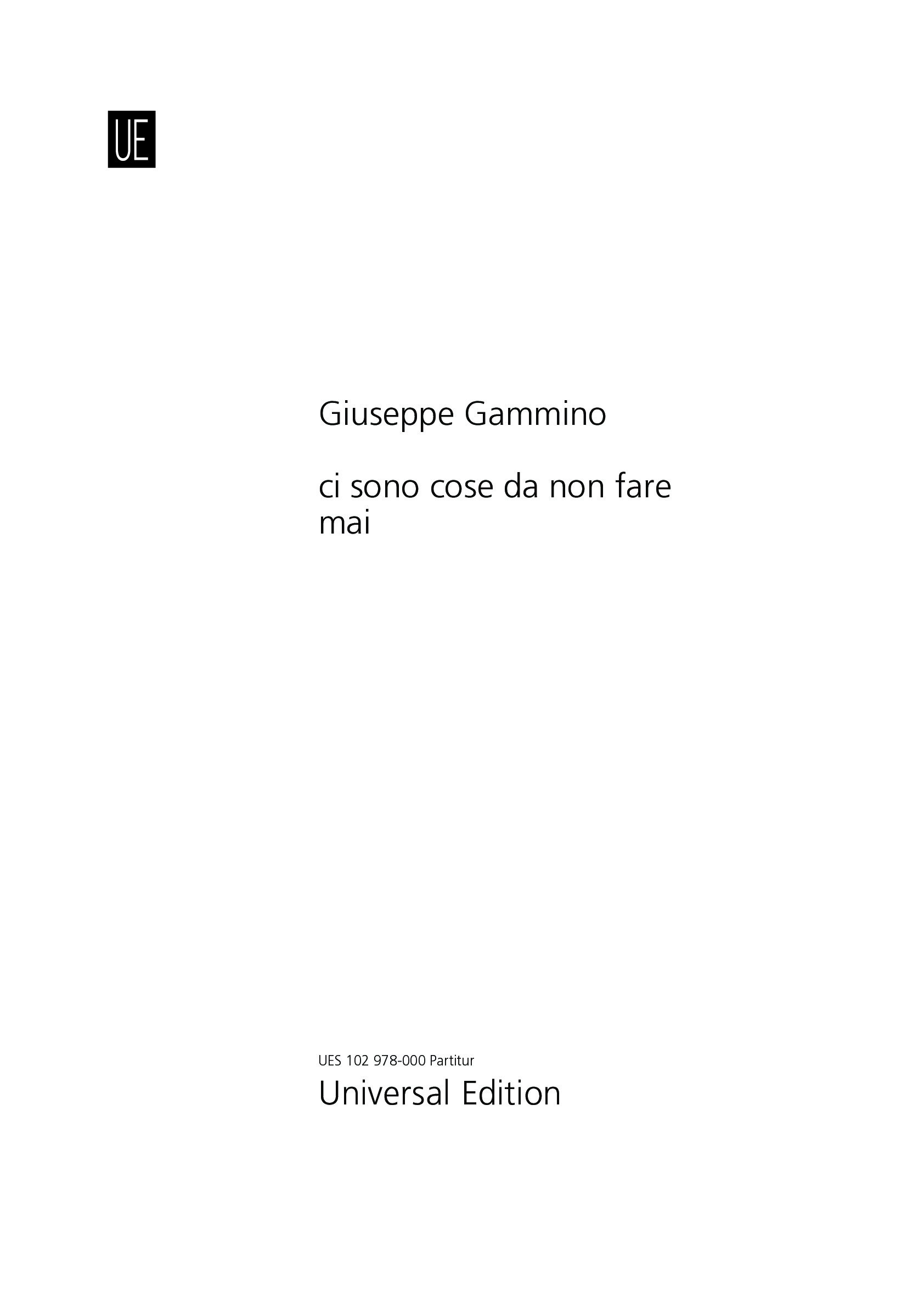
Giuseppe Gammino
ci sono cose da non fare maiType: Dirigierpartitur
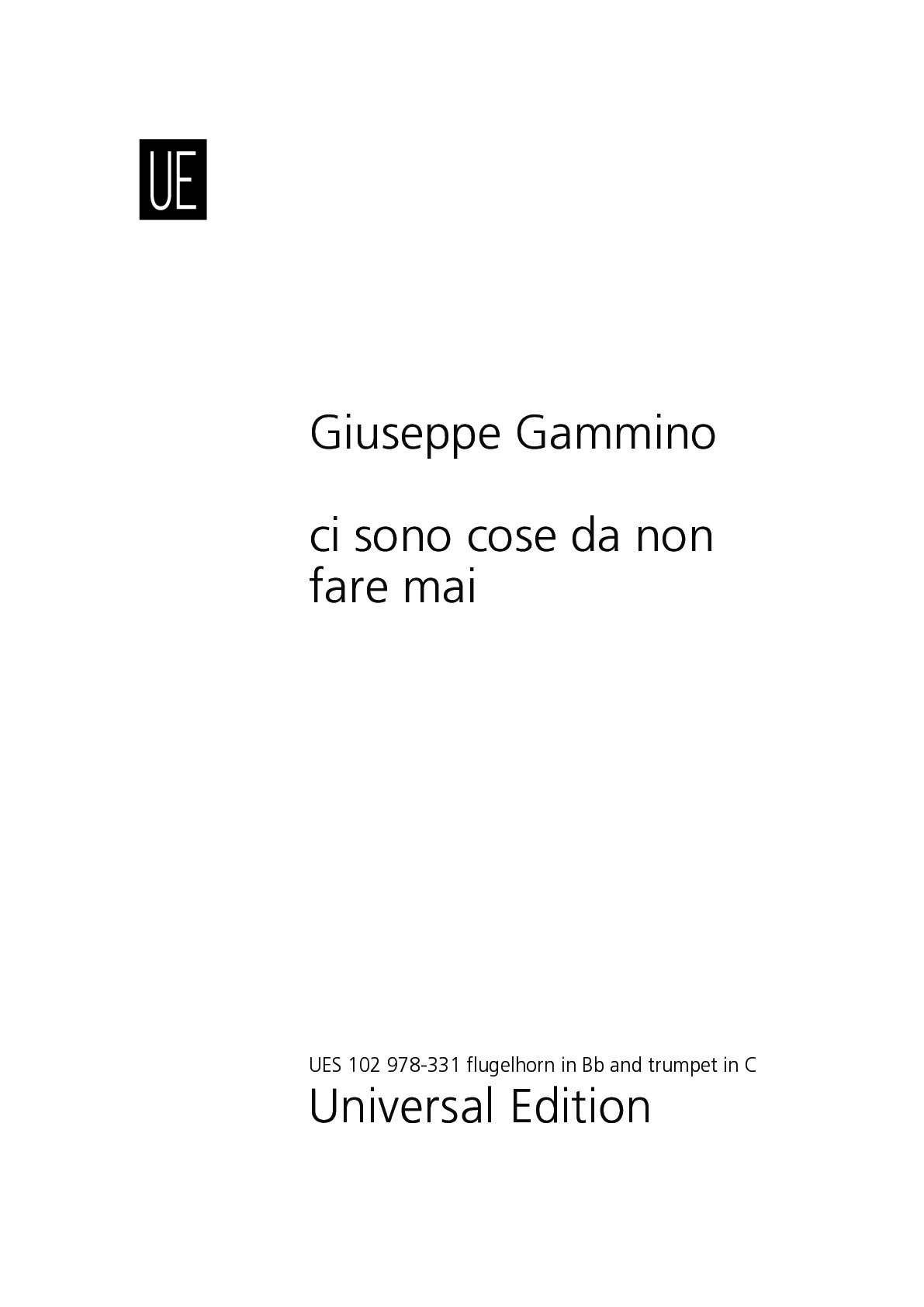
Giuseppe Gammino
Flügelhorn in B (ci sono cose da non fare mai)Type: Stimme
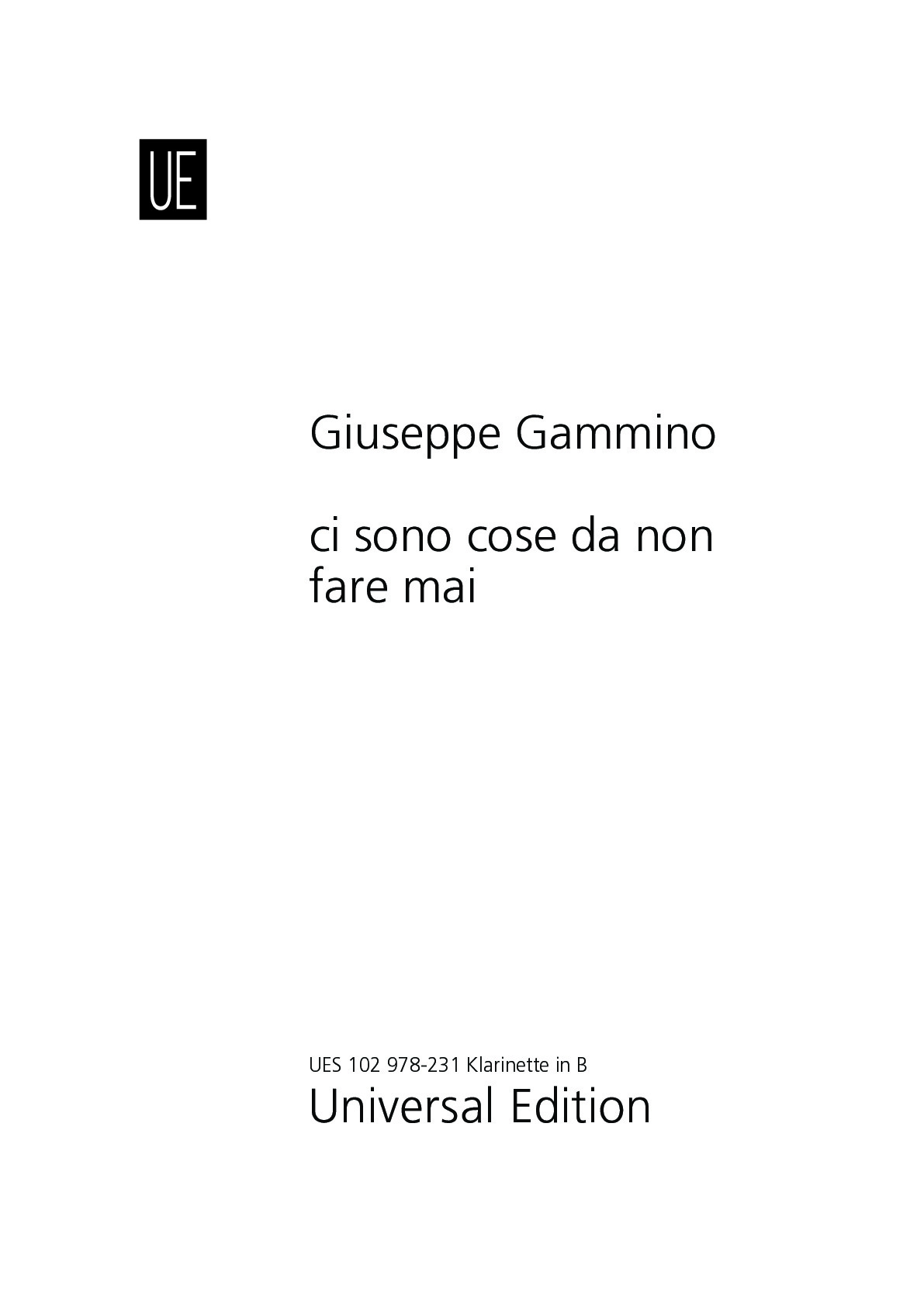
Giuseppe Gammino
Klarinette in B (ci sono cose da non fare mai)Type: Stimme
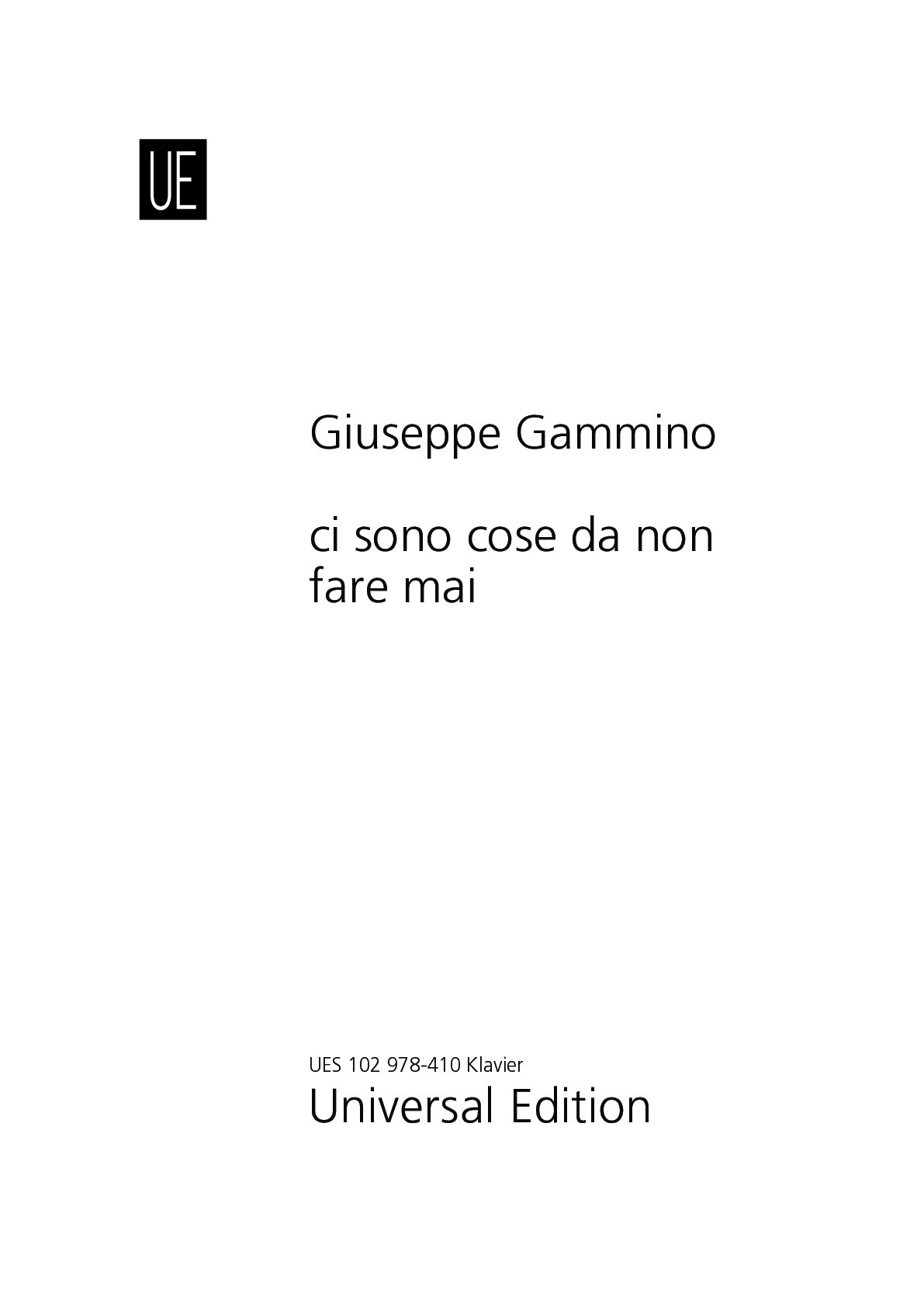
Giuseppe Gammino
Klavier (ci sono cose da non fare mai)Type: Stimme
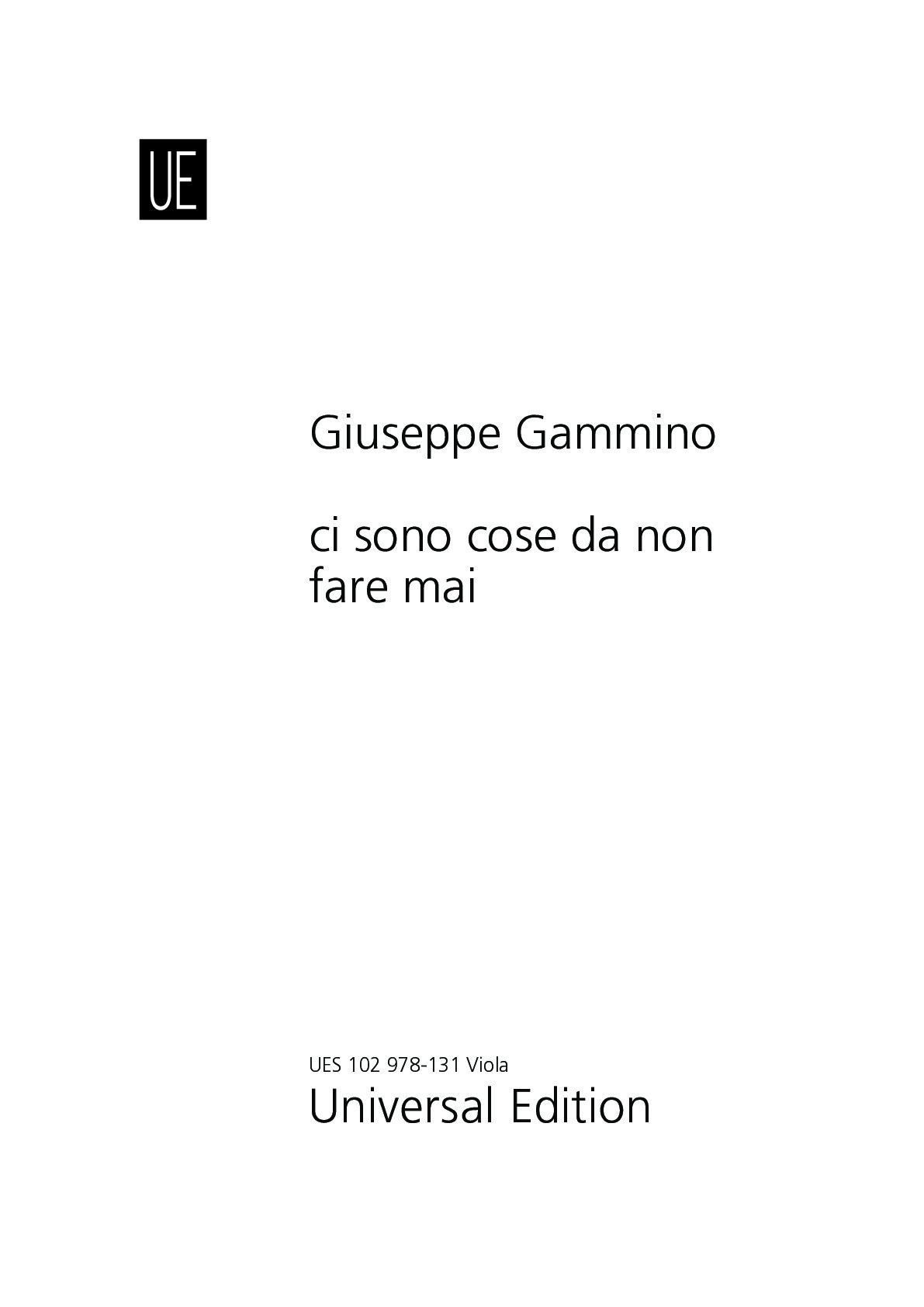
Giuseppe Gammino
Viola (ci sono cose da non fare mai)Type: Stimme
Sample pages
Work introduction
The historical appeals and the absurdity of certain human behaviors that return cyclically offer the input to this composition which deliberately takes its title from the poem of the same name by Gianni Rodari. It stems, in fact, from the urgency of a reflection on contemporaneity and tragic historical recurrences.
The score is divided into sections: each of them symbolically represents a moment of the day, Day, Night, Neither day or night.
The musical performance develops as a dream narrative: the progress of the sound discourse is accompanied by the alternation of light and dark, a representation of the alternation between day and night. The obsessive repetition of sound pieces creates a hallucinatory atmosphere and musically translates the alternation between light and dark; the clarinet seems to evoke the pounding sound of a siren.
The succession between light and dark, Day and Night, is interspersed with a new musical moment Neither day or night which constitutes the central part of the composition and its excited and nervous development. The score also asks the pianist to lend his voice to communicate an ever timely and urgent message: "Greed has poisoned men’s souls, has barricaded the world whit hate [...]". It is the opening words of Charlie Chaplin's famous speech in The Great Dictator (1940) which is urgently recalled by the score, becoming part of the musical narrative.
The composition closes cyclically with the re-proposition of some fragments of the previous sections, partly changed, but recognizable, which gradually dematerialize until they disappear in a progressive rarefaction of sounds. Everything is demolished and only the distant echo of the clarinet remains on which the voice of the trumpeter stands out clearly and gives a clear and unique seal to the piece: " Ci sono cose da non fare mai, / ne di giorno ne di notte, / ne per mare ne per terra: / per esempio, la guerra ”.
Then follows darkness and silence, an emblematic representation of destruction, but also the hope of a new cathartic beginning: “We are coming out of the darkness into the light [...] where man will rise above their hate, their greed and brutality”.
What is necessary to perform this work?
The trumpeter will also play the Tibetan Cymbals and the Tibetan bell.
The Tibetan bell used for the performance is in white crystal and tuned in G. This type of instrument was chosen because at the end of the score the trumpeter will have to light a candle and insert it inside the bell. The material of the bell will allow the audience to see the light of the candle inside.
It is possible to play the score even if you do not have the Tibetan Cymbals and the Tibetan bell. In this case, measure number 1 will not be played and the clarinet will start playing directly; moreover, at the end of the score the trumpeter will light and then extinguish the candle without inserting it into the Tibetan bell.
The score also includes musical sections marked by the alternation of light and dark. During the performance it is necessary for someone to turn the lights on and off as indicated in the score.
